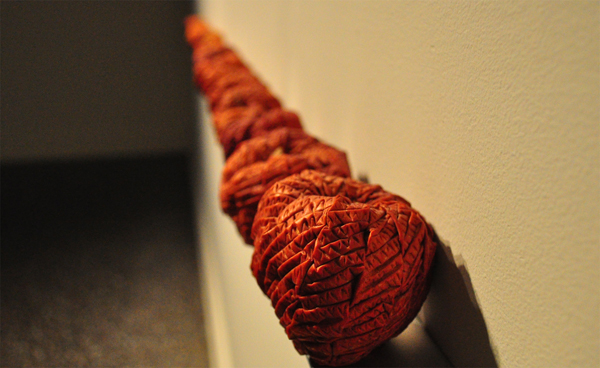

The Samuel Dorsky Museum of Art (SDMA) touches on the more evasive nature of art with its latest exhibition, gracing its walls with a number of introspective prints.
“From Huguenot to Microwave: New and Recent Works” by Marco Maggi opened on Feb. 12 as the first of a series celebrating SDMA’s 10th anniversary, which began in April 2001. The Dorsky will be showcasing a number of exhibits by artists of the Hudson Valley.
Maggi, the museum’s first focus, shows the beauty of initial simplicity through his work, with pieces showing cuts on mediums varying from Plexiglas and paper, to rulers and aluminum-foil. What’s at first bland becomes intricate and exquisite with a closer look.
Currently living in New Paltz and having obtained an MFA from SUNY in 1998, the Uruguayan-born artist seemed a reasonable choice for starting the
local celebration.
As stated in the exhibit’s press release, Maggi’s works “reveal the attention to detail, focus on process and openness to chance developments and accidental outcomes that are so common (and so necessary) to printmaking … [it’s] an intensity of production that is too well-organized to be obsessive but too extensive to be immediately believable.”
Curated by SDMA Curator Brian Wallace, many of the installations share similar patterns, conveying what could be tiny abstract cityscapes, depicted as whirlwinds of bridges, paper places and phone poles, or indecipherable circuit boards, crossing this way and that; this can be seen specifically in the exhibits title Plexiglas piece, “From Huguenot to Microwave.”
“I really like the exhibit,” said second-year psycho-biology major Sarath Manuel, who currently works at the SDMA. “I don’t want to say it’s simplistic … there isn’t a lot going on, but it’s really detailed.”
Manuel continued to emphasize one piece in particular, “Global Myopia,” which shows a series of cuts on a 48-inch convex mirror. It’s almost like an inverse looking glass where dynamics behind the reality have become a bit blurred, yet still reflect back on the individual.
“Myopia is the best answer to globalization,” Maggi said of this short-sighted nature. “We are setting up a dysfunctional information society: reality becomes illegible and visual arts, invisible.”
Although it doesn’t seem special from afar, and each meaning seems difficulty to grasp, the infinite etchings leave visitors equally pleased and perplexed, with other notable pieces including the nearly invisible “Gardens in a Cup of Coffee (North)” and shark-like design of “Plexi Line II.”
The displayed works are compiled of a few new pieces, along with those of Maggi’s New York gallery and a private collector in Boston. “From Huguenot to Microwave: New and Recent Works” by Marco Maggi will remain on display in the Alice and Horace Chandler and North Galleries until April 15.








